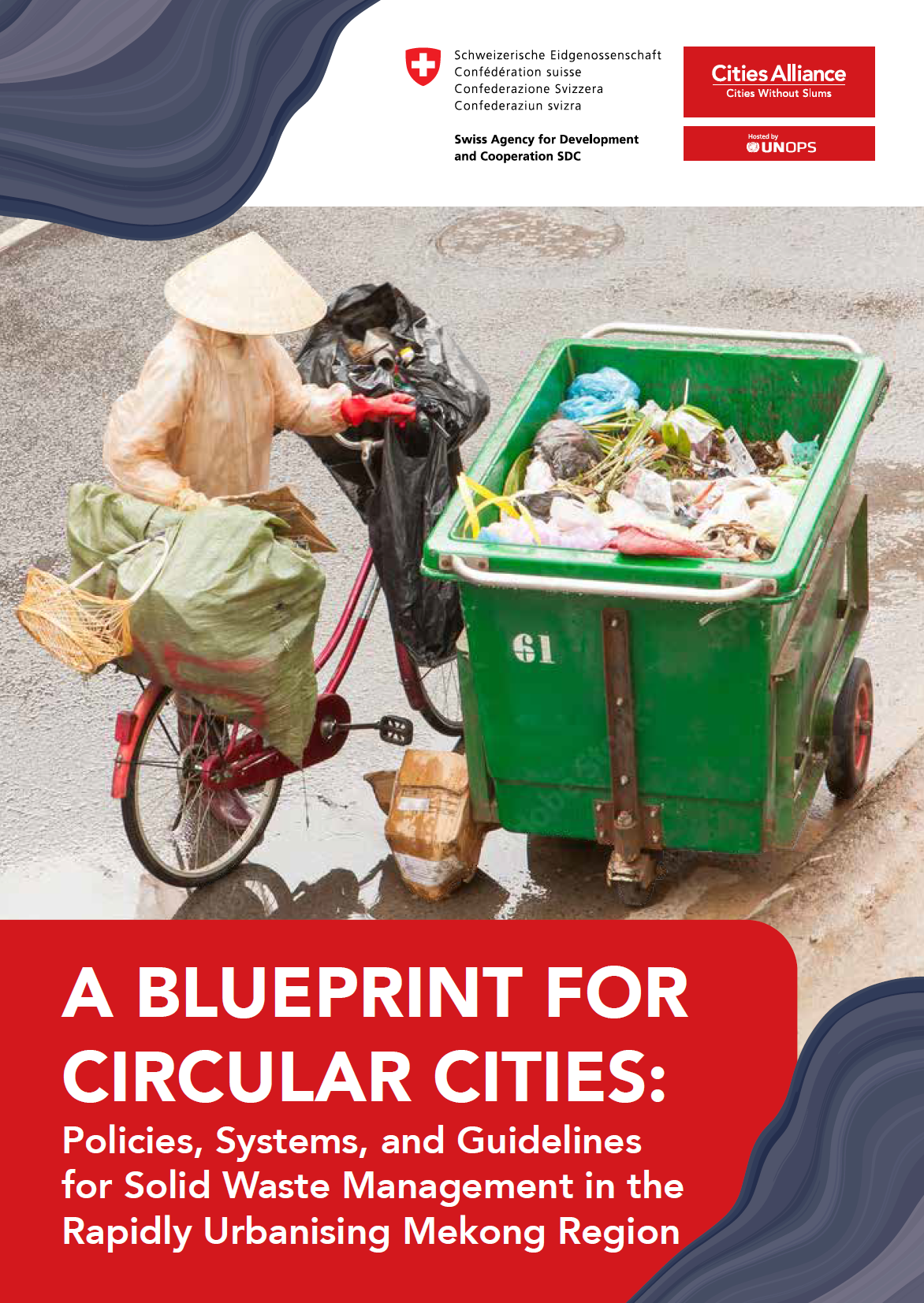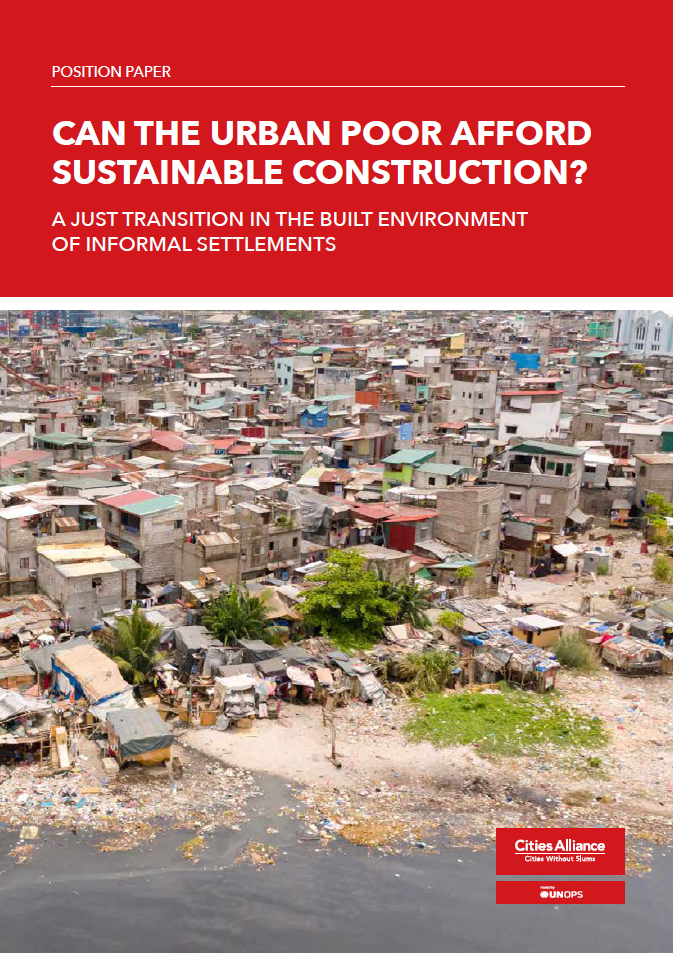- Who We Are
- How We Work
- Regional / Country Initiatives
- Legacy
- Core Themes
- Working Groups
- Portfolio & Results
- Newsroom
- Resources
How Municipal Governments are Preparing for Climate Change in Latin America and the Caribbean: Report from a Survey of Municipal Officials
By Arabella Fraser1
Introduction
This paper2 summarises the results and conclusions from a survey of municipal officials carried out in the Latin America and Caribbean region between 2010 and 2011 to explore their climate change adaptation priorities, activities and perceived needs. This was the first such survey to be undertaken in the region. The paper briefly contextualises the issue of impacts and adaptation in the region's cities, before explaining the background and methodology of the survey. It then sets out the findings and limitations of the results, before discussing the conclusions and their implications for adaptation practice in the region.
Impacts and Adaptation in Latin American and Caribbean Cities
To fully understand the potential human impacts of climate change in the Latin America and the Caribbean and requisite adaptation options it is necessary to examine the impacts on the region’s cities: in 2010, Latin America is the most urbanized region of the developing world, with 79.4% of its inhabitants residing in urban centres (UN-HABITAT 2010). By 2050 the region is projected to have the highest proportion of population in urban areas of any region in the world (ibid.). 13% of the world’s slum dwellers inhabit cities in the region (ibid.), with the potential exacerbation of poverty by climate change in the region therefore of significance to global poverty reduction as a whole.
The experience of Latin America and the Caribbean cities – often ‘early’ urbanisers, highly decentralised relative to their global counterparts, characterised by high inequality and informality – is of wider relevance to efforts to tackle climate change in cities. Yet the region is understudied both on its own terms and relative to studies and initiatives on climate change impacts in cities in Asia and Africa.
The impacts of climate change as experienced by the residents of the regions’ cities will depend on the interaction of physical impacts with a host of economic, social, cultural and political conditions. Adaptation to these impacts will be highly dependent on local conditions. However, broadly speaking, the region is projected to experience an increase in mean temperatures (Magrin et al. 2007). The IPCC reports with high confidence that climate-change related variability and extremes are already evident in the region (ibid.).
World Bank analysis of the agreement between different sets of global models indicates that existing extremes are likely to be amplified: existing drought-risk areas (in particular Chile, Mexico, Guatemala and El Salvador) are likely to become drier and high flood-risk areas (in particular Argentina, Peru and Uruguay) likely to feel more intense rainfall (de la Torre et al. 2009).
Trends also point to the rise in the frequency and intensity of weather-related natural disasters in the region (ibid.). Finally, the IPCC states that continuing rates of sea-level rise (as experienced in the last one to two decades in the continent) will increase the vulnerability of low-lying coastlines (Magrin et al. 2007). Despite the importance of climatic change to the region and its cities, research available does not yet give a complete picture of the panorama for cities. Much of the physical hazards literature is concerned with the large-scale impacts on the region’s climate-sensitive ecosystems.
These losses will have high costs for cities, but the linkages have not yet been systematically explored. City-level climate change scenarios are available for only a few cities in the region, so the view from this perspective is at best partial. The lack of comprehensive data about urban characteristics for cities across the region is a continuous impediment to assessments of vulnerability to climate change risks. Intra-city disparities in exposure and vulnerability to climate change impacts are also as critical to cities in the region as inter-city differences, but there is little attention to this in the existing impacts literature. Finally, as yet, there has been no systematic assessment of urban adaptation efforts in the region.
Background and Survey Methodology
It was in this context that the World Bank's Urban, Water and Sanitation and Disaster Risk Management Unit of the Sustainable Development Department for the Latin America and Caribbean Region (LAC) decided to undertake a survey of municipal officials as part of the scoping phase of a Regional Technical Assistance Initiative on Strengthening Climate Adaptation Planning in Latin American and Caribbean Cities.
The World Bank is increasing its assistance to governments in the LAC region to address the threats of climate change and climate-related natural disasters, and to incorporate appropriate responses in their development plans. The objective of the survey was to gauge the awareness and capacities of municipal policy-makers about climate change impacts and adaptation, the extent to which they were already engaged in planning activities, their perceived needs and vulnerabilities, and their existing priorities. This was the first time that such a survey had been undertaken for the region.
The Initiative as a whole aims to target small and medium sized cities, as they are less likely to have had access to climate change adaptation training, finance or knowledge networks. The survey therefore targeted smaller cities in the region (see Findings Part 1 for the profile of respondents), attempting to include a wide range of geographic areas. The survey was made available in Spanish, French, Portuguese and English via the online SurveyMonkey tool. The data collection phase lasted from July 9, 2010 through March 2, 2011.
Survey methodology
The online survey was addressed to city officials working on urban planning issues, that included disaster risk management, environmental management, and water and sanitation services provision, among others. Given that primary focus of the initiative is cities in the LAC region less likely to have had access to climate change adaptation training, finance or knowledge networks, the targeted cities were small and medium-sized (with a population range between 50,000 and 1,000,000 inhabitants).
For the survey dissemination process, the project team fostered partnership with various academic institutions such as Centro de Cambio Global-Pontificia Universidad Católica de Chile, University of the West Indies, Federal University of Rio de Janeiro and technical agencies including ICLEI-Mexico, CEPREDENAC (Centro de Coordinación para la Prevención de los Desastres Naturales en América Latina) and the Global Development Learning Network in Brazil.
Also instrumental in the dissemination process was the engagement of national associations such as the Colombian Federation of Municipalities; the help provided by World Bank staff working in LAC; and a number of personal and professional contacts the team members used to reach the target audience. Most of the contacts were first established by e-mail with subsequent e-mail and telephone reminders to encourage the potential respondents to participate in the survey. Most of the contacts were first established by e-mail with subsequent e-mail and telephone reminders to encourage the potential respondents to participate in the survey.
Due to the low response rates characteristic of web-based surveys, the survey was initially designed to be a small-scale, open-question qualitative study. However, the interest generated by the survey altered the nature of the survey and the survey results were treated as quantitative data, i.e. coded and analysed numerically.
References
De la Torre, A., Fajnzylber, P. and Nash, J. (2009) Low Carbon, High Growth: Latin American Responses to Climate Change. The World Bank, Washington D.C.
Magrin, G., C. Gay García, D. Cruz Choque, J.C. Giménez, A.R. Moreno, G.J. Nagy, C. Nobre and A. Villamizar (2007) Latin America.Climate Change 2007: Impacts, Adaptation and Vulnerability. Contribution of Working Group II to the Fourth Assessment Report of the Intergovernmental Panel on Climate Change, M.L. Parry, O.F. Canziani, J.P. Palutikof, P.J. van der Linden and C.E. Hanson, Eds., Cambridge University Press, Cambridge, UK, 581-615. UN Habitat (2010) The State of the World’s Cities 2010/2011. London: Earthscan.
1 This paper was written on the basis of survey analysis work undertaken by Danielle Vicente Lima, with assistance from Claudia Lorena Trejos, Tiguist Fisseha and Ellen Hamilton.
2 This paper reflects the findings from a survey undertaken as part of a Regional Technical Assistance Initiative on Strengthening Climate Adaptation Planning in Latin American and Caribbean Cities by the Urban, Water and Sanitation and Disaster Risk Management Unit of the Sustainable Development Department for the Latin America and Caribbean Region at the World Bank. The work was financed by a grant from the Cities Alliance. The team also acknowledges the assistance of JoAnn Carmin, MIT; Carolina Dubeux, Federal University of Rio de Janeiro; and Michelle Mycoo, University of the West Indies for their comments on sections of this paper.


